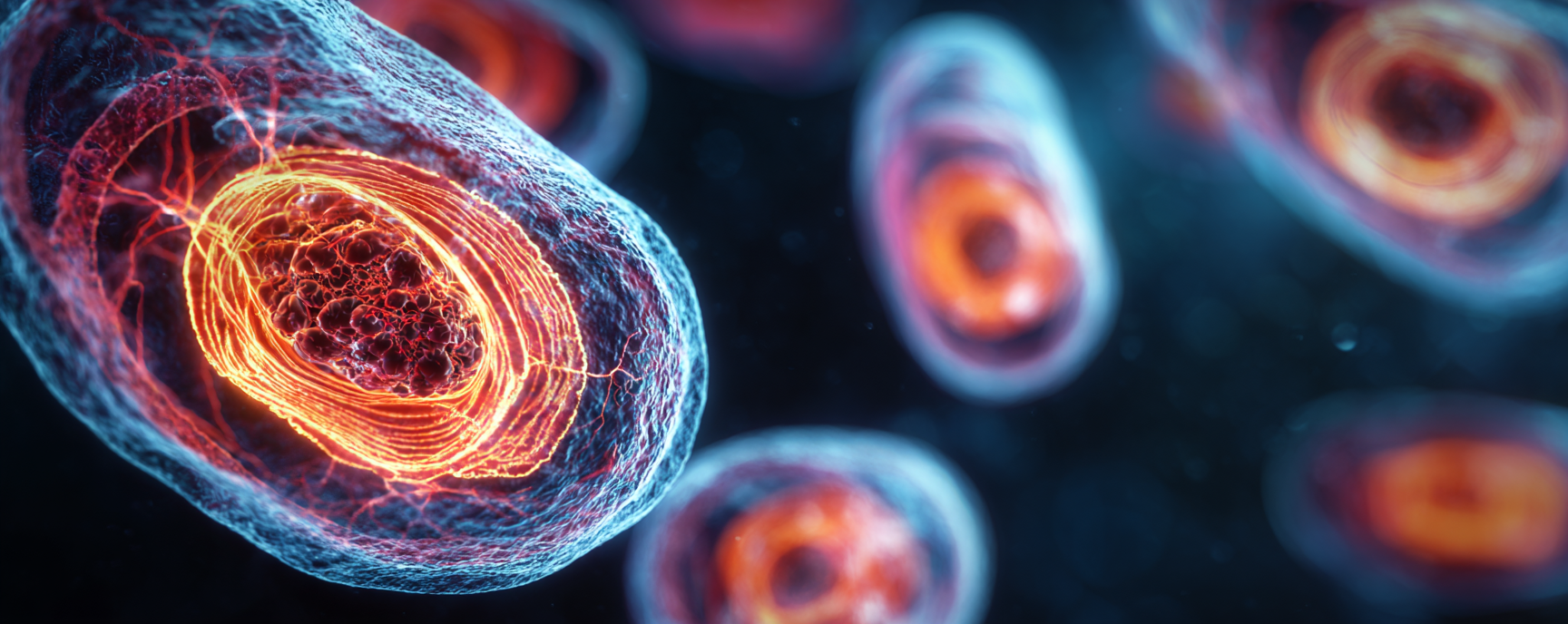Burnout mitochondrial dysfunction is not just a mental health issue, it’s your body’s cellular energy system urgently signaling distress. Emerging research reveals burnout mitochondrial dysfunction as fundamentally linked to impaired mitochondrial activity, shifting our understanding from vague psychological symptoms to measurable biological disruptions in your body’s energy production.
Understanding Mitochondrial Dysfunction in Burnout
Mitochondria are the powerhouses within your cells, generating over 90% of your body’s energy (ATP). When these cellular engines falter due to stress, inflammation, or environmental toxins, your entire body suffers:
- Persistent fatigue even after resting
- Emotional numbness or detachment
- Loss of motivation and creativity
- Cognitive difficulties like brain fog and poor memory
At a cellular level, burnout mitochondrial dysfunction manifests through reduced ATP production, elevated oxidative stress, and impaired mitochondrial regeneration.
What Causes Mitochondrial Collapse?
Several factors accelerate mitochondrial damage and push your body toward burnout:
- Chronic Stress: Excess cortisol and glutamate directly harm mitochondria.
- Neuroinflammation: Stress and infections trigger microglial activation, impairing brain function.
- Environmental Load: Exposure to poor diet, inadequate sleep, EMF, and synthetic chemicals.
- Autonomic Imbalance: Continuous stress and inadequate recovery disrupt essential oxygenation and energy flow.
Phases of Mitochondrial Burnout
Burnout progresses through recognizable stages:
- Overclocking: High productivity driven by adrenaline and cortisol.
- Adaptive Shutdown: Energy redirection to essential survival, reducing mental clarity and mood.
- Cellular Hibernation: Severe fatigue, cognitive decline, emotional withdrawal due to mitochondrial failure.
Identifying these stages early through metrics like HRV, sleep data, and energy levels can dramatically aid in prevention and recovery.
Powerful Strategies for Mitochondrial Recovery
Reboot your mitochondrial health with these evidence-based approaches:
Biochemical Boosters
- Red Light Therapy: Stimulates mitochondrial activity.
- Exogenous Ketones: Provide clean energy with fewer oxidative byproducts.
- Supplements (PQQ + CoQ10): Boost mitochondrial regeneration.
- NAD+ Precursors: Support mitochondrial repair and resilience.
Environmental Reset
- Morning Sun Exposure: Aligns your circadian rhythms.
- Digital Detox: Minimizes harmful EMF and blue light.
- Grounding/Earthing: Restores natural electrical balance.
- Time-restricted Eating: Enhances mitochondrial turnover.
Nervous System Regulation
- HRV-based Breathing Techniques: Improve autonomic balance.
- Vagal Toning Activities: Gargling, humming, and singing improve parasympathetic function.
- Frequency-based Bioresonance: Harness technology for deeper recovery.
Integrate with TEHS Scrum Framework
At Frequency Research Foundation, we align mitochondrial health with high-performance team frameworks like TEHS Scrum. Energy management is foundational to productivity, and mitochondrial metrics become core to assessing team health and sustainability.
Want to explore more deeply? Listen to our dedicated Spotify podcast episode on mitochondrial health and burnout recovery for additional insights.
New chapter alert: The latest chapter in the TEHS book expands on these ideas, framing burnout as mitochondrial shutdown and offering practical ways to restore energy in both individuals and teams. Buy the book today to take your learning further and support your performance with biological precision.
Your Path to Sustainable Vitality
Burnout mitochondrial dysfunction isn’t about willpower, it’s about energy management. Just as successful teams continually improve their workflows, your body needs regular mitochondrial tuning to maintain resilience and vitality.
Ready to recharge your energy systems and prevent burnout?
Explore our mitochondrial recovery programs and frequency-based services today.
